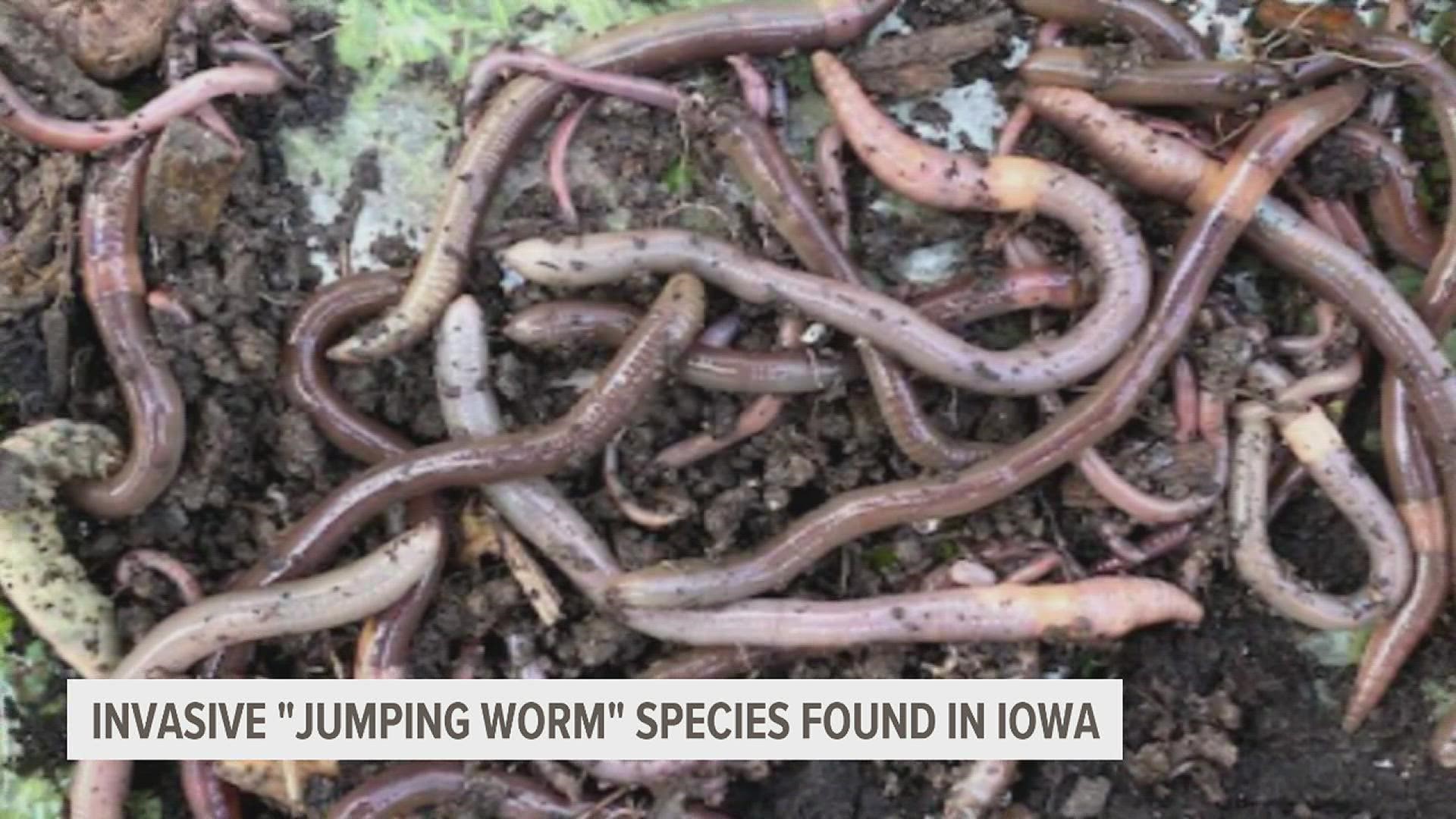IOWA, USA — An invasive species of worms called jumping worms is now in 11 counties across Iowa. These include Winneshiek, Clayton, Dubuque, Buchanan, Linn, Johnson, Muscatine, Scott, Jefferson, and most recently Polk and Story.
Donald Lewis, a professor of entomology at Iowa State University, said jumping worms are similar to the worms most people know as the nightcrawler earthworms, but these can be harmful. The worms do what their name suggests: jump as well as wiggle and squirm.
The worms have been found in states across the country, including the Midwestern states of Minnesota, Wisconsin and Illinois.
Lewis said the first sighting of the worms here in Iowa was in 2018 in counties near Illinois and Minnesota, but the latest sightings were in Story and Polk counties.
"Sometimes this is referred to as the Asian jumping worm," Lewis said. "We believe it came from the eastern part of Asia …they move with plants they move with soil they move with mulch they move with other landscape materials."
Lewis said besides the characteristic of jumping, the other difference between the common worm and the jumping worm is the circle found around the jumping worm's body, which can be white or light pink. The typical worm burrows down into the ground and feeds on some organic matter, while the jumping worm eats the organic matter off the soil surface. He said that can be harmful to the environment.
Related Stories
"The places where [the] impact has been documented have all been in sloped woodlands and forests because the slope is held in place by all the leaf litter and the organic matter that accumulates," Lewis added. "When the jumping worms eliminate that organic matter the soil starts to compact, the soil starts to erode."
So far, Lewis said there is no pesticide to stop or reduce jumping worms at this time. The only way to limit the spread of the worm is by not sharing dirt, mulch or plants the worm can be found in.
There is not enough data to indicate if these worms could be harmful to farmers.
If a person suspects they have come across in their garden or in nature, they can take pictures or videos and send them to insects@iastate.edu.

